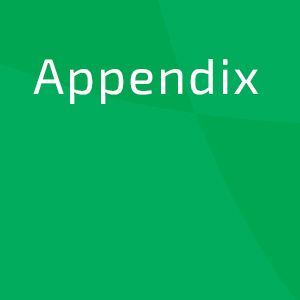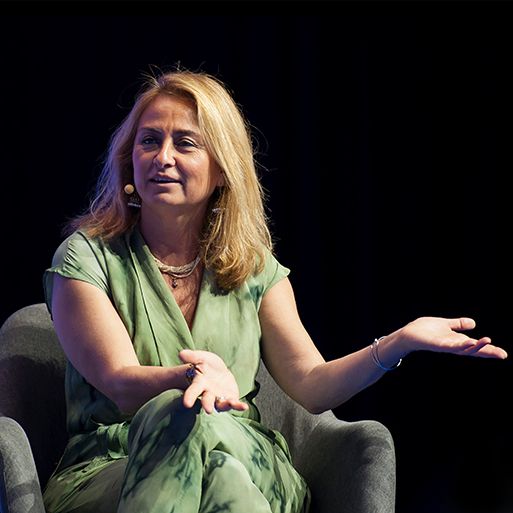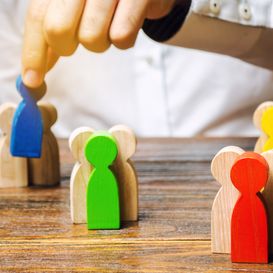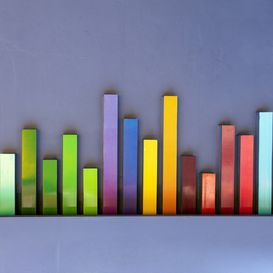
1. Achievements and improvement priorities

1.1. ITEA project impact
Since the start of ITEA, impact - both on business and on society - has been one of the main ambitions. In 2020, impressive impact on the economy, society and everyday life was again created by the ITEA project partners with the support of the national Public Authorities. Since 2017, we have made it one of our priorities to gather remarkable project Impact stories and a total of 28 stories have already been created.
The innovations covered this year enable citizen participation, digital transition by scaling software capabilities, distributed co-simulation (for the automotive domain), a dynamic cyber-physical information ecosystem and same-day diagnosis and much more personalised treatment of cancer.
Discover below the highlights of two projects to inspire you. The other 2020 Impact stories can be found in section 4.1 ITEA Impact stories of this annual report and online via https://itea3.org/impact-stream.html. You can also create your own personal ITEA Impact stream online by choosing the challenges, countries and topics of your interest.
 C3PO Impact story
C3PO Impact story
The ITEA project C3PO has found ways for city planners and designers to consult citizens throughout the urban transformation process and thereby give citizens a better say in urban developments. The aim of the project was to set up a common digital platform that connects all the tools for collaborative urban development.
Impact highlights- Thanks to the enhanced collaborative capabilities developed by Noesis in the C³PO project, aerospace and automotive engineers from different teams worldwide benefit from the possibility to share engineering workflows, data and knowledge related to common design projects, enabling them to improve product performance by 10% or more and save an average of over 30% in engineering time
- For Studio Dott, the C³PO project gave access to a new market of citizen’s involvement and this is reflected in a projected revenue growth of €1.7 m within 5 years.
- The resulting demonstrator TCAVE helps Barco to sell its ‘Group VR’ solutions to the market. Barco’s annual revenue from this type of product is about €20 m. In addition, it will further help Barco in commercialising other solutions such as PowerWalls and CANVAS, the latter addressing a new market segment - the Architecture, Engineering and Construction (AEC) industry - where Barco expects annual growth of about 10% in the coming three to five years.
- The new solutions developed by Mantis in the C3PO project pushed up their annual revenue by almost 15%. The know-how has also been used in other projects after C3PO.
- Netcad developed Netigma and Netcad Digital Universe, which are marketed and sold in Turkey and the Middle East region, yielding a revenue increase of 30%. Netigma is used extensively by local authorities (1000+ municipalities).
- The project also supported FCG’s expansion in three channels of its digital business: solution development, platform economy and SDK sharing. Between 2018-2022, this will result in an annual revenue growth of 5%. During C3PO, a computer scientist was hired who finalised his MSc in support of the project.
 SCALARE Impact story
SCALARE Impact story
Most product innovations today are enabled through software components, so it is no surprise that software is the primary means of competitive differentiation. Software plays a key role in the digitalisation of many products. The required transformations are often driven by the technological evolution of products, systems or services as well as by how the business and the company are organised. The challenge taken up by SCALARE was how to support and enable organisations in scaling their software capability in a proactive, systematic way.
Impact highlights- SCALARE has enabled Husqvarna to make the digital transition, with its team of 4-5 software developers expanding to more than 160 people and enabling a 50% shorter time-to-market compared to 2016.
- For the Swedish consultancy company Addalot, the results of the SCALARE project led to the recruitment of 1 senior consultant working with new consultancy services and an increased revenue of approximately €150 k per year and growing.
- Thanks to SCALARE, Softhouse Consulting found a new way to enter the business arena, having been able to recruit 6 additional senior consultants working with new consultancy services and achieve an increased revenue of over €400 k per year.
- The book ‘Scaling a Software Business’, published at the end of November 2017 and freely available as open access under a Creative Commons license, had been downloaded 16,000 times by the beginning of 2020.
- Since the research studies conducted as part of the SCALARE project, researchers at the University of Limerick have developed this work further, which led to a prestigious 4-year research grant from Science Foundation Ireland.
- Together with open-source advocate Danese Cooper, who started the InnerSource Commons community, one of the SCALARE researchers co-authored a book on Inner Source, published by O’Reilly and freely available. The InnerSource Commons community has steadily grown since, with over 250 members representing a wide range of companies worldwide.
ITEA improvement priorities and results 2020
As part of our annual quality process, several important improvement priorities were defined in collaboration with the ITEA Board to keep the ITEA programme strong and aligned with its goals and the innovation landscape. Below, you can find the 2020 improvement priorities along with their current status.
1.2.1. Continue preparations for ITEA 4
The ITEA 3 label is valid until the end of 2021. In order to ensure a fluent continuation into a follow-up programme, the first Call for the new programme should open in the second half of 2021. To achieve this, first preparations started in 2018 and 2019, but preparations still needed to be done in 2020. The 'Impact plan for ITEA 4 the Future' has been set up along with the ITEA 4 KPIs and ambitions for the first four and eight years. The outline of the ITEA Technology Vision has been created and the legal documents are in a close-to-final state.
1.2.2. Participate in InterCluster and Eureka groups on shaping the future of the Eureka Clusters
The Dutch Eureka Chair has proceeded in its activities towards the development of a new Eureka Clusters Programme (ECP) in 2020. During the first half of 2020, all stakeholders collaborated to further develop the ideas on shaping the future of the Clusters. The Dutch Chair also initiated a Taskforce Future Cluster Instrument to transform the ideas about the future model into a concrete concept that will be feasible and match the needs of industry, the Public Authorities and Cluster organisations. This resulted in the concept of a Multi-Annual Plan (MAP) and an Annual Operating Plan (AOP). During the Eureka High Level Group meeting in June 2020, the new Cluster Guidelines and the new Eureka Clusters Programme were approved.
1.2.3. Prepare and execute a Joint Call on AI
One of the first new cooperation activities that took place between the Clusters in 2020 was the Joint Call on Artificial Intelligence (AI), which was executed in June. 41 project proposals were submitted to the Eureka Clusters AI Call. 27 of these 41 opted for ITEA as the (primary) Cluster. One project consortium chose ITEA as the secondary Cluster.
During the AI Consensus meeting on 2 November, the countries and Clusters that participated in the Joint AI Call aligned their positions and labels were subsequently granted by the Clusters’ Boards. In total, 16 projects were labelled, of which 12 are ITEA projects. The total amount of budget for which applications have been submitted amounts to €162 m. The labelled projects account for more than 60% of this amount (€102 m). So far, the participating countries have allocated approximately €40 m for the Joint AI Call.
1.2.4. Increase customer orientation through ITEA events
Since 2019, we have linked our project exhibition to bigger and more customer-oriented events to further increase customer orientation. As the participating ITEA projects were positive about this approach, we decided to participate in the Cyber Security & Cloud Expo 2020, which was planned to take place on 1 and 2 July 2020 in Amsterdam. The Expo was postponed to 25-26 November due to the COVID-19 pandemic and was finally transformed into an online event, reducing ITEA's participation to an online exhibitor profile and shifting our physical presence to next year's edition in November 2021.
The Smart City Expo World Congress (SCEWC) was also transformed into an online event. As this event did not correspond to ITEA’s requirements, we did not participate in this year’s event.
Next to these customer-oriented fairs in which ITEA will continue to participate, ITEA also organised a thematic Customer and End-User workshop. In 2020, this workshop was held online and was focused on the topic of cyber security. In section 4.2 ITEA Events, you can discover more about this and other events that ITEA organised or actively participated in.
1.2.5. Continued efforts (including KPIs) on:
- Impact stream: We produced five new Impact stories in 2020: SCALARE, M2MGrids, C3PO, ACOSAR and 3DPathology. In addition, we created six new ITEA Success stories in 2020: BENEFIT, ACCELERATE, M2MGrids, SCALARE, ACOSAR and C3PO.
- Press approach in combination with partners: In 2020, we developed press releases in cooperation with the partners of the four ITEA award-winning projects. Although press coverage increased strongly, there were no publications in national high-quality newspapers. The ITEA PS-CRIMSON project was covered on Dutch television.
- Expand the ITEA Board, BSG and STG: As intended, we extended the ITEA Board by two companies in 2020; Esri Canada and NXP Semiconductors Germany joined the ITEA Board in September and November respectively.
- Get the overall ITEA programme size back towards €110 m: Based on concrete successes, we will continue to work with our industry partners and with the Public Authorities to improve the funding possibilities, both in the usual ITEA countries and in new countries. Since the last two Calls, the target for this KPI has been challenging. This may be related to the new and upcoming Eureka Clusters Programme and to national circumstances.
- Reducing the time between idea and project start: At the start of ITEA 3, our process has been defined to allow a time-to-project of 10 months from the Call opening (mid-September) via labelling (mid-March) to finalised funding decisions (June-July). Based on the funding programme schedule in countries, we have now set the target for the time-to-project at a still adequate and more realistic 12 months. Shortening and synchronising the decision timelines between countries is one of the ambitions of the new Eureka Clusters Programme.
1.2.6. High-level KPIs
ITEA Office has a Quality Management System (QMS) in place; since April 2014, this QMS has been ISO9001:2008 certified and, since April 2017, the QMS of ITEA Office meets the requirements of the new standard ISO 9001:2015. As part of this QMS, several high-level KPIs have been defined for ITEA. In 2020, ITEA achieved the following scores for these high-level KPIs:
| Strategic leadership | Target 2020 | Realised 2020 |
|---|---|---|
| Forecast funded Call size ITEA 3 Call 6 | > €110 m | €55-63 m |
| Time from idea to project start of ITEA 3 Call 6 | 12 months | 18 months (estimated) |
| Hit rate ITEA 3 Call 5 | >75% | 65% |
| Average quality of events (SCEWC, PO Days, Customer workshop) | >3.7 | 3.8 |
In this Annual report, the sections 3.1 ITEA Programme size, 3.2 ITEA Calls progress and 4.2 ITEA Events give an explanation and more details on these KPIs and their values in 2020.
1.3. ITEA improvement priorities 2021
To keep ITEA at the forefront of innovation, the following improvement priorities have been defined for ITEA for the upcoming year:
1.3.1. Finalise preparations to launch ITEA 4 as part of the ECP
From July 2021, ITEA will no longer receive an 8-year Eureka label but will be part of the Eureka Clusters Programme, which has been designed to improve the Eureka Cluster performance and collaboration. As mentioned, the ‘Impact plan for ITEA 4 the Future‘ was set up in 2020 along with the ITEA 4 KPIs and ambitions for the first four and eight years. The outline of the ITEA Technology Vision has been created and the legal documents are in a close-to-final state. A set of legal documents still has to be delivered for ITEA to be approved as a programme in the ECP. All documents need to be finalised before June 2021.
1.3.2. Participate in ECP groups that will shape the future of the Clusters
In an open innovation Community, there is a need for new knowledge, new players and new solutions. Active cooperation with other Cluster Communities, e.g. by designing extra thematical Calls based on the national priorities defined by Public Authorities, will engage this need and increase the innovation level and impact of all Clusters involved.
ITEA will strive to be at the heart of the new ECP and ITEA Body representatives will therefore participate in the ECP Clusters Committee (CC) and the CC Support Group.
Furthermore, the ITEA Office also participates in a set of working groups. In order to increase the visibility and awareness of Eureka and the separate Clusters, ITEA works closely together with the other Clusters, the Eureka Secretariat and a set of Public Authorities in several working groups that are preparing and shaping the different elements of the ECP. These consist of a broad range of items, such as Joint Evaluation methodologies, 1 and 2 stage Call processes and Branding & Communications. Joint actions related to the ECP are aligned through these topics. Additionally, ITEA and CELTIC-NEXT are jointly developing a common and integrated ICT system to support ECP-related activities and projects, for example for the Joint Eureka Clusters Calls for projects.
1.3.3. Continuation of ITEA bottom-up Calls in the new ECP
A unique asset of Clusters is the subject-free, bottom-up Call for projects, which allows the ITEA Community to propose innovation topics based on specific needs of their customers. This is an essential feature of the Eureka Clusters and contributes to the success and impact of ITEA projects. ITEA will continue to execute the bottom-up Calls alongside the Joint Eureka Cluster Calls that provide an additional opportunity to respond to national priorities and main industrial trends.
1.3.4. Preparing Joint Call rules and agreements, initiating the next Joint Call(s)
Joint Calls are new and will generate more collaboration between the Clusters as project partners may select multiple Clusters to work with. Clear rules and agreements shall be defined to create smooth processes for all stakeholders.
1.3.5. Continuation of customer orientation through ITEA events
Since 2015, ITEA has had a strong focus on customer orientation to improve the projects, their outcomes and the potential to create impact. We have created our own customer-oriented events and participated in customer-oriented fairs. In 2021, we will continue this customer orientation through our events by organising a Cyber Security Day, a Smart Energy customer workshop and a Smart City Day and by participating in the Cyber Security & Cloud Expo 2021. We will also explore possibilities to participate in the Smart City Expo World Congress 2021 and investigate potential additional events (e.g. on Smart Industry or Smart Engineering).
1.3.6. Continued efforts (including KPIs) on:
- Achieving an ITEA Call 7 size of €110 m (excluding 2021 Joint Eureka Clusters
Calls): ):
We will continue to work with our industry partners and with the Public Authorities to improve the funding possibilities, both in the usual ITEA countries and in new countries. For 2021, we set the target for Call 7 at €110 m. - Minimising the time between project idea and project start in the ECP:
To improve the processes of the Clusters, they have been reorganised into the new Eureka Clusters Programme, which should lead to better and clearer funding decisions more quickly. This goes for the Joint Calls but should also be applicable to the ITEA bottom-up Calls. The importance of shortening the time between project idea and project start has been confirmed by the participating ITAC members. The Eureka Joint Clusters AI Call can be considered a testcase to reduce this timeframe. Although ITEA 3 Call 7 is still effectuated under the ITEA 3 programme, we are already striving for improvements to this Call, targeting a time-to-project of 12 months. - Expanding the ITEA programme in new countries that participate in the
ECP:
Eureka has a big network of participating countries and is continuously investing in participation from new countries. The Joint Calls, where PAs also have a voice in choosing the subject, are a strong tool for attracting new countries and becoming familiarised with the Clusters. These new countries can then more easily be approached and involved in ITEA’s bottom-up Call. For example, Singapore participated in the 2020 Joint AI Call preparations and then joined the 2020 ITEA PO Days. - Strengthening the press approach in combination with partners:
Over the past few years, ITEA has been working in collaboration with (award-winning) project partners to create press releases to promote the ITEA project results. This has resulted in a much higher coverage of articles on the internet. Through our experience in 2020, we saw that big technical universities have an especially broad reach; their articles are published all over the world. We therefore want to expand this approach and include the universities in it to a greater degree. In addition, we want to continue the approach we have now around the ITEA Awards of Excellence by setting up common press releases/news items with the winning project partners. - Expanding the ITEA Impact stream:
Our goal is to create at least 4 new Impact stories in 2021; in addition, we aim to produce 6 new ITEA Success stories.
Other chapters
Use the arrows to view more chapters

Appendix A. Call statistics per country and per year
Participation in person-years per Call and per country per year






